Your cart is currently empty!

The Lunch- Claude Monet
Indulge in the timeless beauty of Claude Monet’s “Lunch” with this exquisite oil painting reproduction. Crafted with the utmost attention to detail, this piece captures the essence of Monet’s original masterpiece with precision and artistry.
Using high-quality materials and expert craftsmanship, this reproduction showcases the vibrant colors and delicate brushstrokes that define Monet’s icon…
The Lunch – Claude Monet
Introduction to The Lunch
Claude Monet, a founding figure of the Impressionist movement, is widely celebrated for his ability to capture the fleeting effects of light and atmosphere. While most of his works are focused on nature, landscapes, and iconic sites like water lilies and gardens, one of his lesser-known but equally important works is The Lunch (Le Déjeuner). Painted in 1868, this piece showcases Monet’s evolving technique and style, demonstrating his attention to everyday life and the use of light in a domestic setting.
Monet’s The Lunch captures a serene, intimate moment during a meal with friends or family. It provides insight into the artist’s interest in everyday moments, revealing the beauty he saw in common experiences. This painting also marks a transition for Monet as he began to focus more on his revolutionary approach to color and brushwork that would come to define the Impressionist movement.
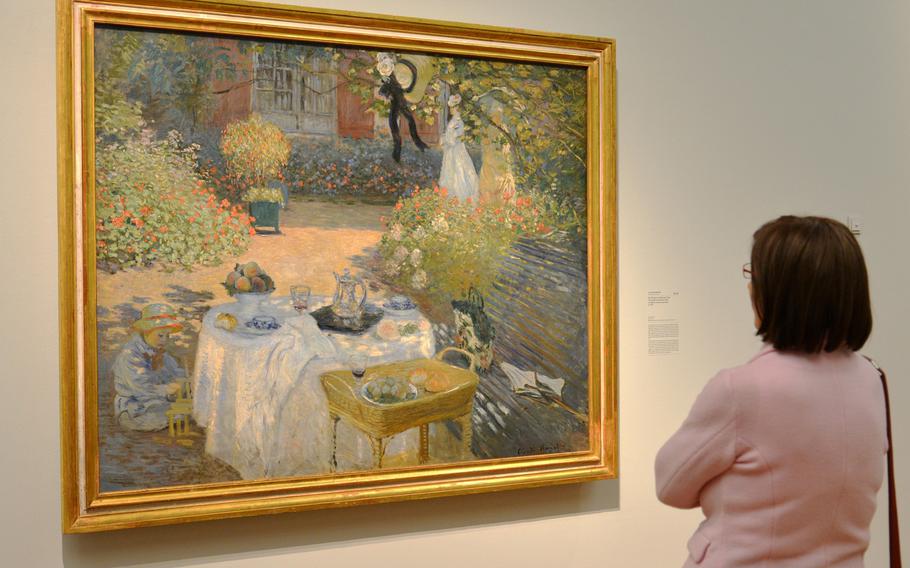
The Story Behind The Lunch
Monet painted The Lunch during a period in his life when he was exploring the relationship between people and their environment. At this time, he was living in the town of Argenteuil, a suburban area near Paris, where he often hosted gatherings with friends and family. It is believed that The Lunch features Monet himself and his companions sharing a meal outdoors, possibly in the garden or courtyard of his home.
The painting captures a moment of leisurely dining in a casual, yet elegant setting. Monet’s focus is on the interplay of light, the lush greenery surrounding the scene, and the relaxed nature of the gathering. This reflects Monet’s larger artistic goal of transforming the ordinary into something beautiful and worthy of attention.
The subject matter of dining was not entirely new to Monet. He had explored similar themes in previous works, but The Lunch marks a more intimate and refined portrayal of the act of eating. It’s a scene of relaxation and conversation, where the characters seem absorbed in their meal and each other’s company. Through this work, Monet also begins to experiment with how human figures interact with the natural world, an idea that would develop further in his later works.
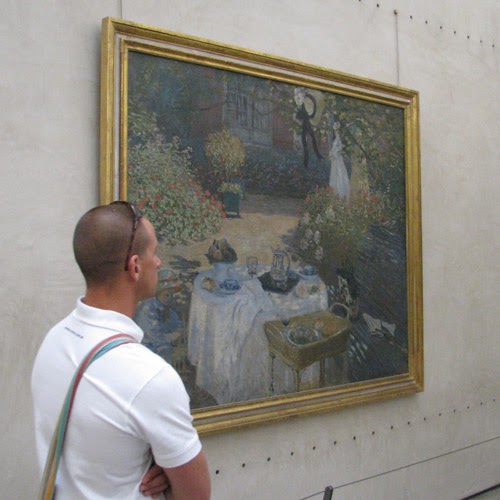
The Artistic Techniques and Style of The Lunch
Brushwork and Color: As in many of Monet’s works, the hallmark of The Lunch is the artist’s distinctive brushwork. Rather than using fine details and precise lines, Monet employed quick, loose strokes to capture the essence of the moment. This technique allows the viewer to feel the texture of the scene, from the soft folds of the clothing to the dappled light filtering through the trees.
Monet’s use of color is another defining feature of the painting. The tones are soft yet vibrant, with lush greens and the natural hues of the setting contrasting beautifully against the lighter tones of the figures. The colors are not merely realistic but are meant to convey the mood and atmosphere of the scene. By blending light and color in this way, Monet evokes a sense of peace and tranquility, making the viewer feel as though they are seated alongside the diners, enjoying the same pleasant moment.
Light and Shadow: Light plays a crucial role in The Lunch, as Monet expertly captures the way sunlight filters through the foliage, creating patterns of light and shadow on the ground and the figures. This focus on light would become one of Monet’s trademarks, as he was fascinated by how light changed throughout the day and how it affected the mood and appearance of a scene.
The subtle gradations of light and shadow bring a sense of movement and depth to the work. Monet’s ability to depict the effects of natural light on his subjects, whether it’s the warmth of sunlight or the coolness of shadows, was revolutionary for its time. In The Lunch, Monet uses light not only as a visual tool but as a way to convey emotion, enhancing the atmosphere of calm and contentment.
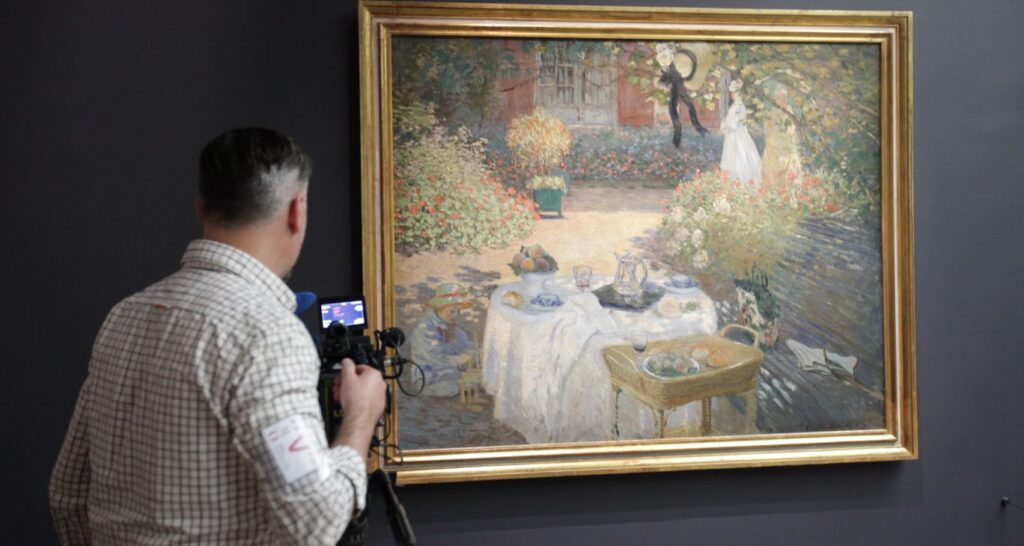
The Influence of The Lunch on Monet’s Later Work
Although The Lunch is not as famous as some of Monet’s later masterpieces like Impression, Sunrise or Water Lilies, it is a significant part of his artistic evolution. The work demonstrates his growing mastery of color and light, both of which would be central to his Impressionist style. The painting marks a transition from the more traditional and detailed works of his earlier years toward the loose, expressive brushstrokes that would define his later career.
The domestic theme of The Lunch also reflects Monet’s increasing interest in portraying the lives of ordinary people. Instead of monumental scenes or grand historical subjects, Monet began to focus on the quieter, everyday moments that made up his world. This approach would become a cornerstone of Impressionism, as Monet and his contemporaries sought to capture the beauty in the seemingly mundane aspects of life.
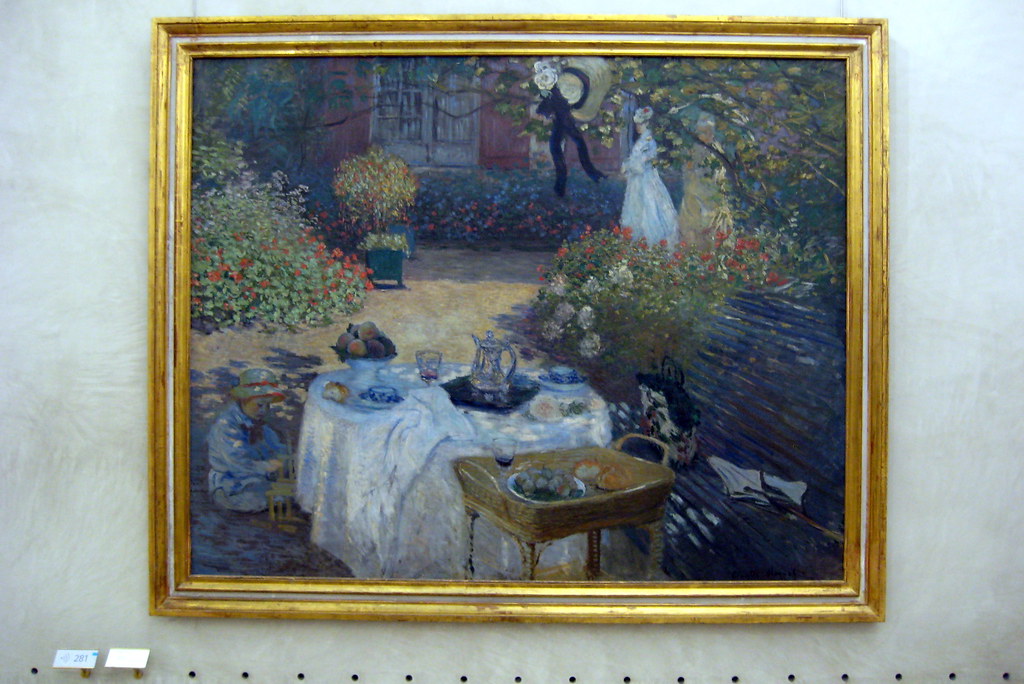
The Legacy of The Lunch
Though The Lunch may not be as widely known as Monet’s other series, it is a key work in understanding the development of his signature style and the themes that would come to define his career. The painting captures a quiet, intimate moment, full of light and warmth, offering a glimpse into Monet’s personal life and his evolving artistic vision.
Monet’s exploration of everyday moments, along with his innovative use of color and light, would go on to inspire generations of artists. The intimacy and simplicity of The Lunch offer a timeless reminder of the beauty found in daily life. It demonstrates Monet’s ability to elevate ordinary moments, transforming them into profound works of art.
Conclusion: The Timeless Charm of The Lunch
The Lunch may not be one of Monet’s most celebrated works, but it remains an important and charming piece that offers insight into the artist’s evolving style. Through his soft brushstrokes, masterful use of color, and focus on light, Monet created a painting that feels alive with warmth and intimacy. The scene of a shared meal is elevated by Monet’s attention to detail and his ability to capture the fleeting beauty of everyday life.
This painting stands as a testament to Monet’s ability to find beauty in the simplest of moments, reflecting his growing belief that the ordinary world around us is worthy of artistic attention. The Lunch may not carry the same fame as his iconic works, but its gentle depiction of domestic life remains a powerful example of Monet’s evolving mastery of light, color, and atmosphere.
Claude Monet
Claude Monet was a pioneering French painter and a leading figure in the Impressionist movement, celebrated for his innovative use of light, color, and brushwork to capture fleeting moments in nature.
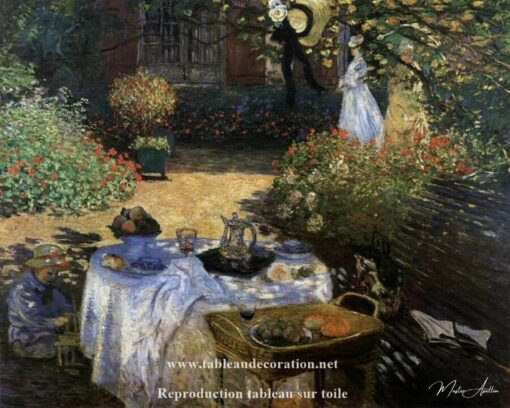
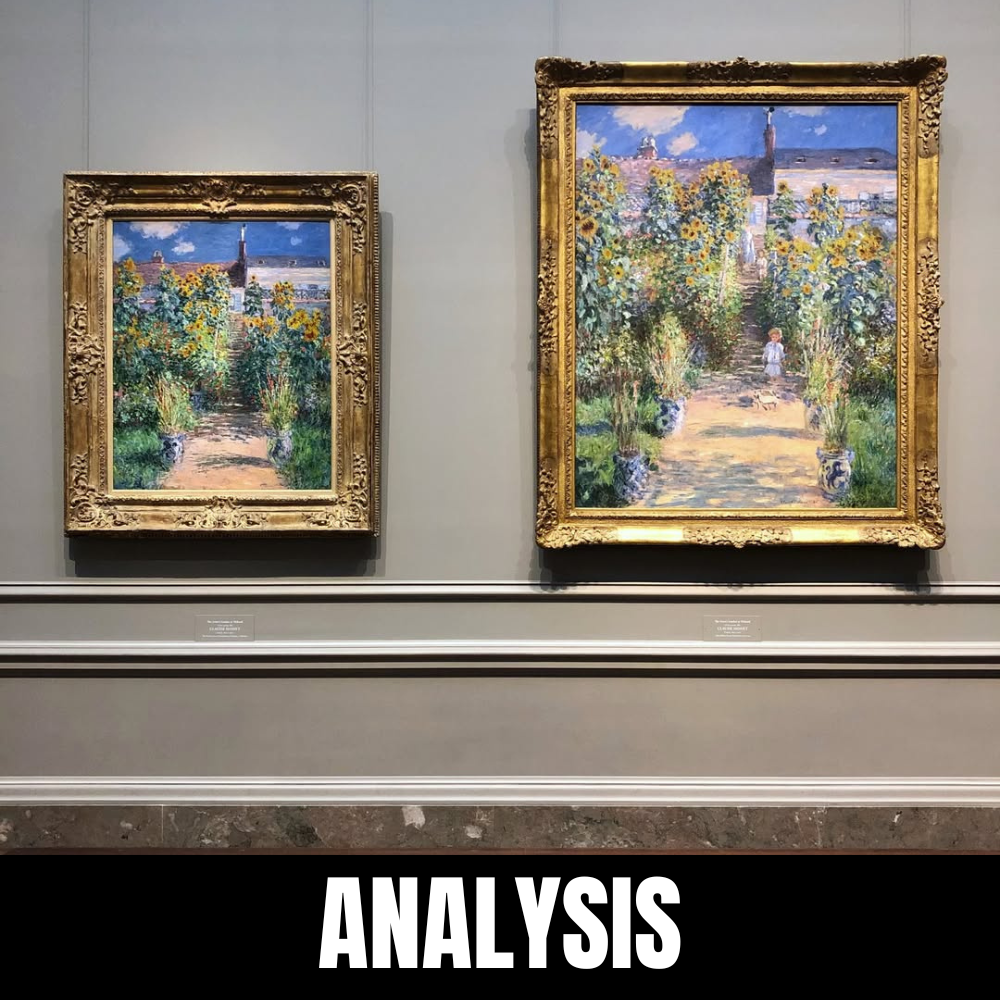
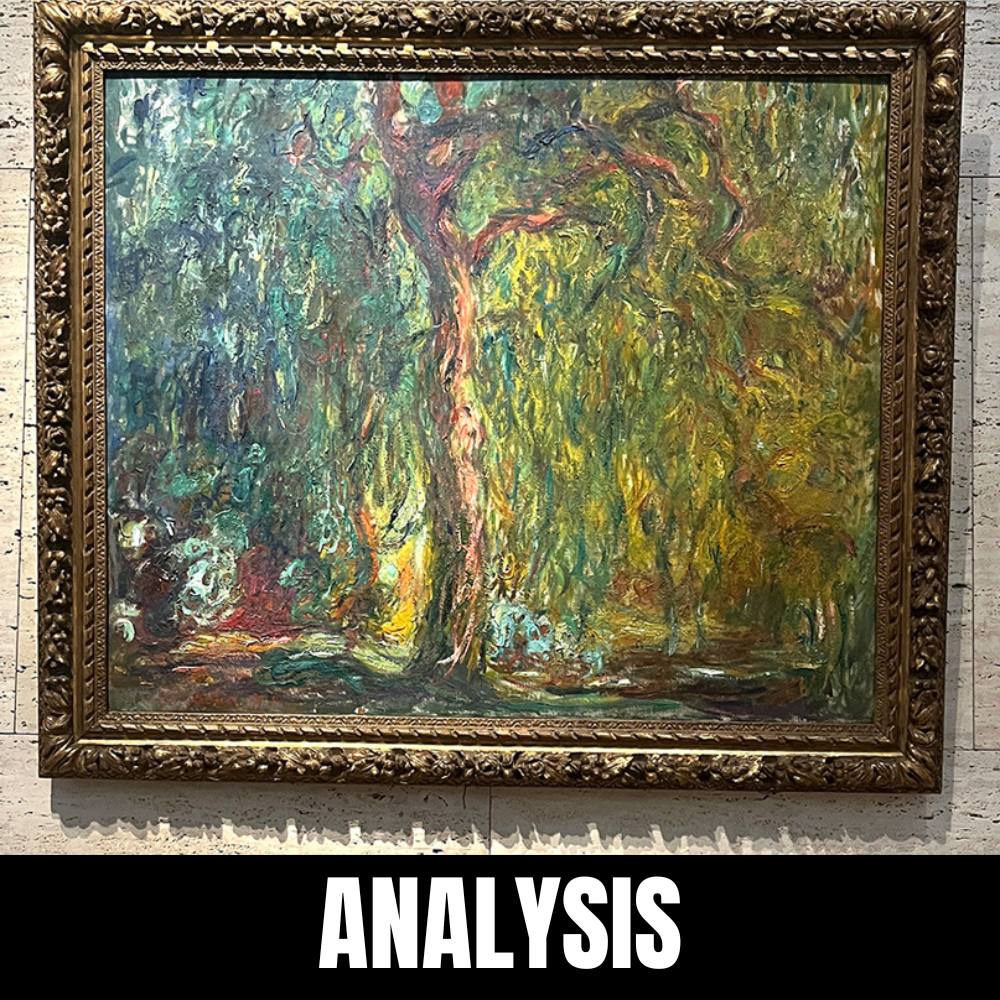
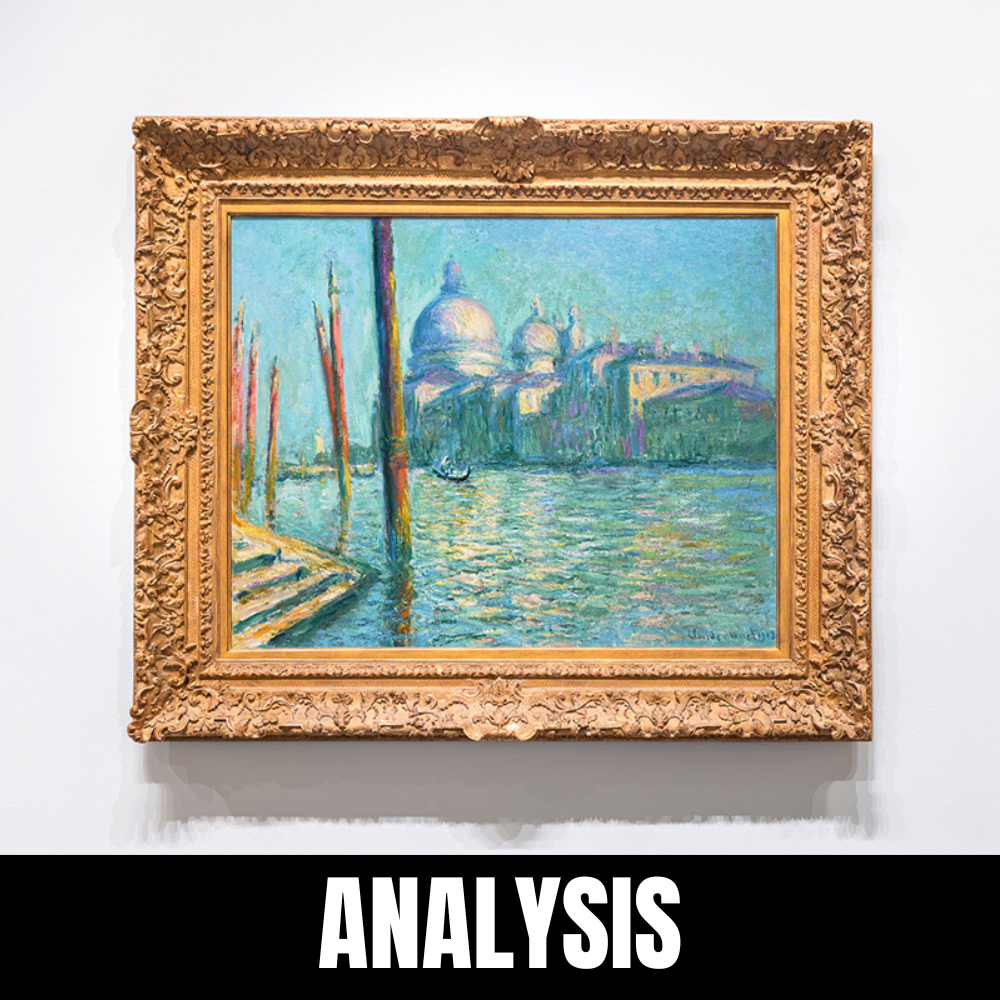
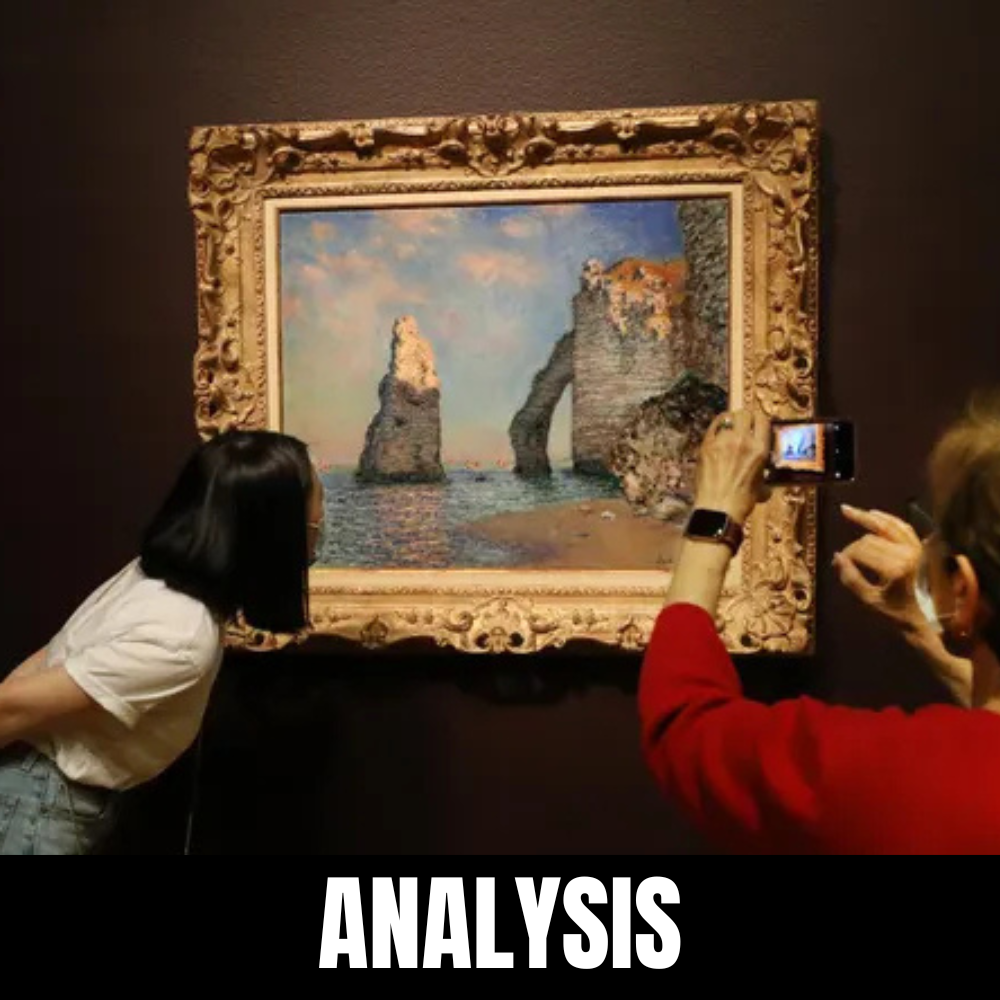
Leave a Reply